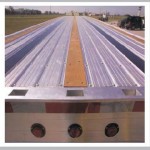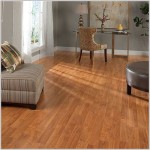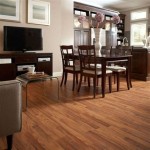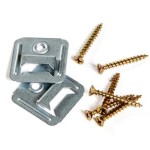Average Cost of Wood Flooring: A Comprehensive Guide
Wood flooring is a timeless investment for homes, adding warmth, elegance, and value. However, the cost of wood flooring can vary significantly depending on several factors. Understanding these factors is crucial for budgeting and making informed decisions. This guide provides a comprehensive overview of the average cost of wood flooring, key considerations affecting price, and tips for maximizing value.
Types of Wood Flooring and Their Price Ranges
The type of wood flooring you choose plays a major role in the overall cost. Here's a breakdown of common types and their estimated price ranges per square foot (including installation):
- Hardwood Flooring: This encompasses various wood species like oak, maple, cherry, and walnut. Hardwood flooring typically costs between $6 and $15 per square foot for solid wood and $4 to $12 per square foot for engineered wood. Solid hardwood is more expensive but offers greater durability and refinishing potential.
- Softwood Flooring: Pine, fir, and cedar fall under this category. Softwood flooring is generally more budget-friendly, ranging from $3 to $8 per square foot. While less durable than hardwood, it can still be a suitable option for lower-traffic areas.
- Bamboo Flooring: A sustainable alternative to traditional wood, bamboo flooring is known for its durability and hardness. It costs around $5 to $12 per square foot, depending on the type of bamboo and finish.
- Engineered Wood Flooring: A more stable option for climates with fluctuating humidity, engineered wood flooring comprises a plywood core topped with a thin layer of hardwood veneer. It costs slightly less than solid hardwood, ranging from $4 to $10 per square foot.
Factors Influencing Wood Flooring Costs
Beyond the type of wood, several other factors contribute to the overall cost of wood flooring. These factors include:
1. Wood Species and Grade
Different wood species have varying costs depending on their availability, durability, and aesthetic appeal. For instance, oak is relatively affordable, while exotic woods like Brazilian cherry or walnut are significantly more expensive. The grade of the wood also impacts the price. Higher-grade wood, featuring consistent color, grain patterns, and fewer knots, commands a premium.
2. Flooring Installation
Labor costs account for a considerable portion of the overall expense. The complexity of the project, such as the presence of obstacles, intricate patterns, and the need for subfloor preparation, affects the installation time and labor costs. Professional installers typically charge between $4 and $10 per square foot for installation.
3. Finishing Options
The finishing touches applied to your wood flooring can add to the cost. Staining, sealing, and sanding all contribute to the final price. Stain colors and finishes also impact the overall cost, with custom stains and premium finishes being more expensive.
4. Additional Costs
Several other expenses come into play when considering the overall project cost. These include:
- Materials: This includes underlayment, transition strips, moldings, and other accessories needed during installation.
- Permits and Inspections: Depending on your location, you might require permits and inspections for your wood flooring project.
- Waste: Some waste is inevitable during installation, and you should factor in the costs of disposing of or repurposing the excess wood.
Maximizing Value and Saving Costs
While wood flooring is a significant investment, there are ways to maximize value and potentially save costs. Consider the following tips:
- Shop Around: Compare prices from multiple flooring retailers and contractors to ensure you're getting the best deal. Ask for detailed estimates outlining labor costs, materials, and any additional charges.
- Consider Less Expensive Wood Species: Exploring alternative wood species, such as maple, cherry, or pine, can help reduce costs without sacrificing aesthetics. These options offer unique characteristics and are often more affordable than high-end exotics.
- Embrace Simple Designs: Opting for straightforward layouts and avoiding intricate patterns or complex transitions can simplify installation and save on labor costs. Consider using standard flooring planks instead of custom sizes.
- DIY Installation: If you have the skills and time, you can save money by installing the flooring yourself. However, for complex projects, it's advisable to hire a professional to ensure a high-quality result.
- Negotiate Prices: Don't be afraid to negotiate prices with flooring retailers and contractors. Especially during off-peak seasons or if you're willing to buy in bulk, you might be able to secure discounts.
- Prioritize Quality: While saving money is important, prioritize quality materials and installation to ensure long-lasting, durable flooring. Investing in higher-quality wood and professional installation can pay off in the long run.

Average Hardwood Flooring S In 2024 Forbes Home

Hardwood Flooring Cost 2024 Per Square Foot Mk

How Much Does Hardwood Flooring Cost 2024 Guide

How Much Does Hardwood Flooring Cost 2024 Guide

Cost To Install Hardwood Flooring Floor Fixr

Cost To Install Hardwood Floors The Home Depot

How Much Does Hardwood Flooring Cost 2024 Guide

How Much Should Wooden Flooring Cost In 2024 Checkatrade

How Much Does Flooring Installation Cost In 2024 Forbes Home

Here S How Much Hardwood Flooring Costs In 2024 Angi
Related Posts








